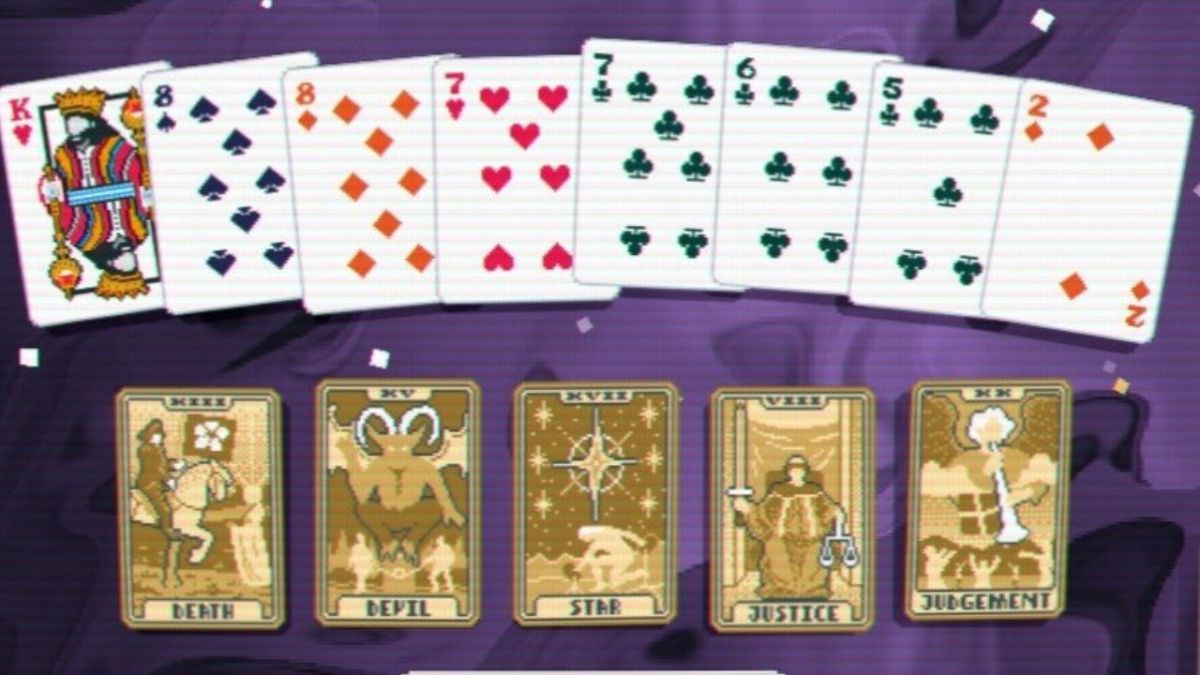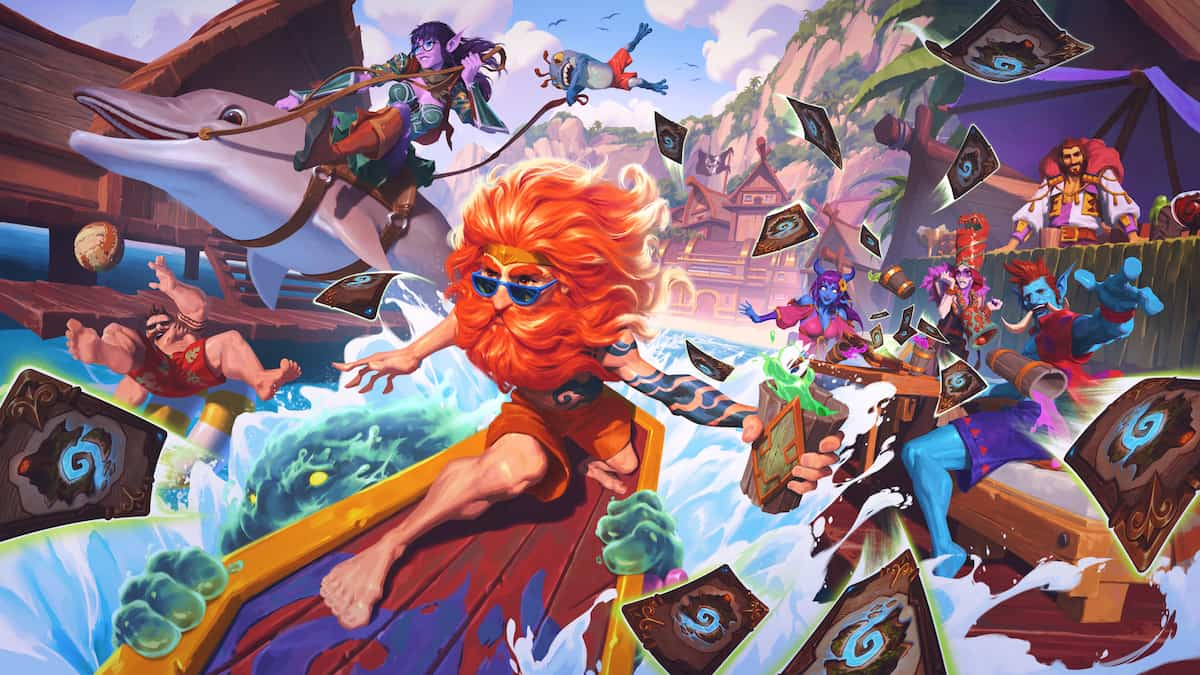Introduction
Greetings, dear readers, and welcome to another installment of ”Mulligan phase”, the article series where I cover just aout everything regarding Hearthstone that has nothing to do with the gameplay itself. It has been quite a while since the last time that I’ve written anything but I’m back now and I’m ready to throw some article goodness your way. Today I want to talk about the most dreaded aspect of Hearthstone…RNG. Oh, yes, the dreaded randomness of Hearthstone, the source of many complaints and salt threads all over the internet. Today we’re going to tackle this beast, examine it and see if there is anything that can be done about it.
With all that out of the way, sit back, relax and let’s just jump into this 🙂
Randomness In Card Games
First and foremost, we’re going to visit the aspect of randomness in card games. Hearthstone developers have spoken about the aspect of randomness in their game multiple times and they have stated that this is one of the upper sides of digital card games, the fact that there you can defy the laws of physics and do stuff that you couldn’t do in real life (stuff such as copying cards from your opponents hand). While I do agree with them that randomness is one of the benefits of having a card game solely on a digital platform, did you know that there are aspects of pure randomness even in physical card games?
The Coin Flip
For those of you who don’t know, I’ve used to play Pokemon TCG professionally (way back in the day) and when it comes to randomness in games, the first thing that naturally pops in my brain is the dreaded coin flip. In Pokemon TCG there is a mechanic of flipping a coin and if you flip heads, something happens. Usually it is something along the lines of ”Deal X damage for each heads” or ”If heads, the defending pokemon is paralyzed”. The coin flip mechanic has been a staple in the game ever since its introduction and although I don’t follow the card game any more I do believe that it still exists. When it comes to randomness in physical card games it doesn’t get any more random than the coin flip. Your cards literally have a 50-50 chance of doing something and sometimes games are decided by that 50-50 chance. Also, yes, like in Hearthstone, choosing who goes first is also random and it depends on, you’ve guessed it, coin flip! I haven’t followed the tournament scene but I’ve heard something of a deck that was played a very long time ago and it could win on the first turn (and pull this off regularly so it wasn’t some absurd combo which requires a divine starting hand). This means that if the coin flip to determine who goes first and who goes second favors you, you instantly win the game. A 50-50 chance to win a game on the very first turn.
So, how do players deal with this RNG? I really can’t speak for players these days since I haven’t been following the game scene for a years now but back in my day we’ve only had one way of dealing with the coin flip and that was not using it. To optimize our decks and make them do exactly what we want/need them to do a lot of us have cut out cards that require you to flip a coin. If it was absolutely necessary for to use cards that require of you to flip a coin then the best solution was to find cards that have some beneficial effect regardless of the outcome of the flip.
Choose Randomly
I like to believe that at least some of my readers have played Magic: The Gathering before. Those of you who have played it before might have encountered a certain element of randomness in the game. Those who haven’t, don’t worry, I will explain it. One of the common card mechanics is choosing random cards in your opponent’s hand, on the field or even choosing a random opponent. This mechanic is not often seen, or better yet, not seen at all in a highly competitive environment, but it is nevertheless present in the game. Some cards that use if have effects that can go very wrong for your opponent, such as discarding cards at random from their hand and then discarding something that they really need, while others are a lot tamer, like dealing 1 damage to a random opponent. A good thing about randomness like this in Magic: The Gathering is that it is never present on a keyword and it is never present in a set to such an extend that decks are built around it. It is just something that exists out there and some players use it. I personally use a few cards with random targets in my non competitive decks and sometimes the results can be quite hilarious.
So, how do players deal with this RNG? Similar to how players deal with the coin flip RNG. You just avoid using the cards with this certain random element. Unlike in Pokemon, it is quite easy to avoid the RNG element in magic…at least this sort of RNG.
Resource RNG
One last type of randomness that I’m going to talk about in this section of the article is resource RNG and it is something that, as far as I know, most commonly appears in Magic: The Gathering. You see, unlike in Hearthstone, in this game you don’t get a mana crystal each turn but you need to, instead, play a type of card that is called a land card. Each land card can produce one or more mana which is a resource that you use to play other cards and, usually, you can play only one land per turn. The problem appears when it comes to drawing your land cards. Since land cards are also a part of your 60 card deck, you need to draw them, just like any other card, in order to play them and sometimes you just don’t draw them or you draw too many of them and that causes you to lose the game. Also, some decks out there…well, most decks out there…use two or more different colors of cards. There are five colors of cards (white, green, red, blue and black) and each has its own land card that can produce only that color, so sometimes players draw too many lands of one color but they have cards of the other color in their hand. I hope that I haven’t made this too confusing for those who have never played Magic: The Gathering before.
So, how do players deal with this RNG? While you might hear a lot of people talking about the resource randomness in this game (the official term is mana screw), it is not as bad as some people make it out to be. There are lands that can provide you with two or more different colors of mana. There are lands that can provide you with more mana than a regular land can. The problem is that these lands often cost a lot of money. Sure, you can almost fully optimize your land cards, but it will cost you a lot of money. In summary, mana screw is not that common in fully optimized decks. Poor or casual players are in fact the ones who are experiencing it the most.
Card Draw
I’ve placed this type of RNG in a section of its own because there is a lot to talk about it and it is one of the most often complains that I hear from other players. In every card game out there, literally every card game out there, you have different cards in your deck. Even if there were only two different cards in your deck, you still have what I call the draw RNG. You will never get the same hand every time and you will rely heavily on luck to draw the card that you need. Here, let me give you an example:
Jim and Tom have developed a game called Duo. In Duo you have two different types of cards in a 60 card deck. You have cards that are completely red and you have cards that are completely black. The rules of the game are simple: both players draw four cards from the top of the 60 card deck. The first player plays a card from his hand of any color of his choosing. The opposing player must play the card of the same color. If he can’t, he draws a card from the top of the deck until he draws a card of that color. The color in question now changes and the other player must play a card that matches it. The winner is one with less cards in his hand once the entire 60 card deck is drawn.
I know that the rules are weird but it is something that I’ve literally came up while typing this article. I hope that you’ve already figured out the point of this example and, if you haven’t, fear not for I will explain it. There are two different types of cards in the deck, red and black cards. Two is the very minimum number needed for a diversity and thus we’re dealing with the game which has the least possible amount of diversity in it. Even with that it is still impossible to avoid draw RNG because you have a 50-50 chance of drawing a red or a black card. In summary, draw RNG is something that is in the very nature of card games. It is impossible to avoid, unless under some very specific game rules, and it shouldn’t be the hot topic of complaining. Yes, it sucks when your opponent has no way of winning the game except to draw this one card in his deck and he manages to draw it and cause you to lose. It really sucks but it is, however, unavoidable.
P.S: I know that some of you will probably think about something along the lines of ”well, what instead of drawing cards from your deck, you search your deck for a card that you want and you put it into your hand?”. First off, that would be degenerate and you would have a card game that is filled with early game combos which are next to impossible to stop due to the nature of ”drawing” cards. Second, there actually was a game that did this. It was called Purge: Sins of Science and it had died within less than half a year after the launch. The people didn’t like this mechanic. I don’t even recall if the game had ever made it to stores or was it only available to order online.
Summoning RNG
Summoning RNG is the name that I use to describe the barnes effect. Lately this type of RNG has been plaguing the standard format, but only because it is a bit more extreme than it used to be. We’ve seen this effect really early on in the game’s history with cards like deathlord and ressurect, cards that can, under certain conditions, summon other minions. What actually inspired me to write this article in the first place is this very type of RNG and it is actually what I would consider the most troubling one. Enter the recruit mechanic, the barnes effect mechanic (but only better). This is a new mechanic coming out with the next expansion Kobolds and Catacombs and it is almost the exact same barnes mechanic with a twist. The minion that you summon this way keeps its original stats and is pulled from your deck. It is not a copy of a minion from your deck, it is the minion from your deck. The second twist is that you can, to some degree, control what minions will be summoned. There will be cards that will summon only minions of a certain cost, a certain keyword, a certain rarity and maybe even a certain creature type which will be busted beyond belief. Imagine having a 4 cost spells that recruits an elemental minion. You don’t even need to run a single elemental in your entire deck except for ragnaros-the-firelord and you have a turn 4 ragnaros-the-firelord. That would be broken beyond belief! :O
So, how do we deal with this type of RNG? Well, to be completely honest with you, in order for this type of RNG to be avoided the entire mechanic needs to be changed while still keeping its fundamental purpose unchanged. The idea behind the recruit mechanic, the fantasy behind it, is that you call upon a friendly ally from your deck to help you. On paper it is a fun mechanic and I like it but there is one big problem with it and that is the summon part. So, in order to avoid the summon part you need to do the next best thing: discover a minion from your deck. However, there is still a problem. Discover creates a copy and we’re looking to avoid that. So, we can’t summon a minion and we can’t discover it. What can we do? Well, in Magic: The Gathering and most other card games there is something called tutoring. Tutoring is the term of searching your deck for a card and putting that card into your hand (sometimes to the top of your deck). This is what recruit should have been in the first place and this is what completely avoids any RNG. The new recruit now says: choose an X minion from your deck and put it into your hand. This is perfect because you don’t rely on RNG since you’re literally choosing a minion from your deck and it still keeps the fantasy of calling upon a friendly ally from your deck to help you. I’m really curious to know what do you think about my fix for the recruit mechanic. Please, let me know in the comment section below.
Conclusion
There you have it. All types of RNG in Hearthstone and other card games (that I know off). My short summary would be that randomness in card games is nothing something that is completely unavoidable, but it is also not something that should be encouraged. Sure, there are things that can’t be avoided like the draw RNG, but that should be where card designers draw the line. For Hearthstone I unfortunately don’t see the end of RNG. I’ve just gave you a solid example of how it could have been avoided with the new mechanic and the development team still went with the RNG anyway so I doubt that we will ever see the end of RNG in this game. As always if you’ve liked this article do consider following me on twitter https://twitter.com/Eternal_HS. There you can ask me all sorts of Hearthstone questions (unrelated to this article) and I’ll gladly answer them as best as I can!





Published: Nov 12, 2017 09:29 am